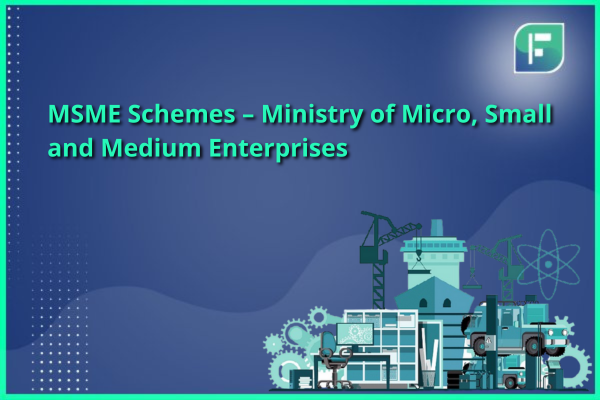MSME, which stands for Micro, Small, and Medium Enterprises, constitutes the foundational pillar of our economy. These enterprises are vital for economic growth, job creation, and overall development. However, they often lack the extensive resources and advanced technology that larger corporations possess. To support and protect these enterprises, the government has instituted various MSME schemes, rebates, and counselling services. These initiatives aim to provide financial assistance, promote growth, enhance competitiveness, and ensure the sustainability of MSME registration in the competitive business sector.
Revised MSME Classification in India
In response to the need for a revised classification of Micro, Small, and Medium Enterprises (MSMEs) in India, the government has introduced significant changes to the criteria. These changes aim to promote business growth and facilitate the scaling of operations while maintaining access to MSME benefits.
Previous MSME Classification
The previous MSME classification was based on investment in plant and machinery or equipment, with distinct limits for manufacturing and service sectors:
| Sector | Criteria | Micro | Small | Medium |
| Manufacturing | Investment | < Rs.25 lakh | < Rs.5 crore | < Rs.10 crore |
| Services | Investment | < Rs.10 lakh | < Rs.2 crore | < Rs.5 crore |
These limits posed challenges for businesses seeking to expand, as they often inhibited further investment and growth.
Revised MSME Classification under Atmanirbhar Bharat Abhiyan
To address these limitations and foster business growth, the government introduced a revised MSME classification under the Atmanirbhar Bharat Abhiyan. The revised classification no longer distinguishes between the manufacturing and service sectors and incorporates a composite criteria of investment and annual turnover. This change allows businesses to scale their operations while still enjoying the benefits of MSME status.
The revised MSME classification is as follows:
| Criteria | Micro | Small | Medium |
| Investment & Annual Turnover | < Rs.1 crore & < Rs.5 crore | < Rs.10 crore & < Rs.50 crore | < Rs.50 crore & < Rs.250 crore |
Note: The government has further increased the upper limit for the Medium category.
These changes in MSME classification aim to encourage business growth, promote healthy competition, and support the aspirations of entrepreneurs in India.
MSME Schemes by the Government of India
MSMEs are the backbone of the Indian economy, contributing significantly to economic growth and employment. To bolster their growth and development, the Indian government has launched several MSME schemes and support systems. Mentioned below are some key MSME schemes introduced by the government:
1. Udyog Aadhaar Memorandum
The Udyog Aadhaar Memorandum is one of the most important MSME schemes that requires businesses to register using their Aadhaar card, a 12-digit unique identification number issued by the government. Registering under this scheme simplifies the process of availing credit, loans, and government subsidies. Businesses can register online or offline, providing them with more convenient access to various benefits.
2. Zero Defect Zero Effect
This initiative focuses on ensuring that products manufactured for export meet specific quality standards to prevent rejection or return from international markets. Businesses adhering to these standards are eligible for rebates and concessions, encouraging better quality control in the manufacturing process.
3. Quality Management Standards & Quality Technology Tools
Under this MSME scheme, MSMEs receive support in understanding and implementing quality standards and embracing new technology. The government conducts activities such as seminars, campaigns, and awareness programs to educate businesses about the latest technologies available, promoting innovation and efficiency.
4. Grievance Monitoring System
This system offers a platform for business owners to register and monitor complaints they have with government services or regulations. It allows businesses to check the status of their complaints and seek redress if they are dissatisfied with the outcome, thereby enhancing transparency and accountability.
5. Incubation
The Incubation scheme is one of the most important MSME schemes that aids innovators in implementing new designs, ideas, or products. It provides financing, covering 75% to 80% of the project cost, to support the development and launch of new ideas, designs, and products, fostering innovation and entrepreneurship.
6. Credit Linked Capital Subsidy Scheme
This scheme offers business owners the opportunity to upgrade their technology by providing capital subsidies. It encourages MSMEs to replace old and obsolete technology with modern alternatives, improving their operational efficiency and competitiveness. Entrepreneurs can approach banks directly to access these subsidies.
7. Women Entrepreneurship
Dedicated to supporting women entrepreneurs, this is one of the most important MSME schemes that provides capital, counselling, training, and delivery techniques to empower women to start and expand their businesses. It aims to bridge the gender gap in entrepreneurship and promote economic independence among women.
Additional MSME Schemes Based on Loans
Some additional MSME schemes which are based on providing finance and loans are as follows:
Pradhan Mantri Mudra Yojana (PMMY)
The Pradhan Mantri Mudra Yojana is a financing scheme aimed at supporting small and micro enterprises in various sectors. These loans, known as MUDRA loans (Micro Units Development Refinance Agency), provide banks with refinancing facilities for lending to small businesses.
Coverage of the PMMY
Mudra loans under PMMY support MSMEs with a loan limit of up to 10 lakhs. Interest rates vary by bank but are generally reasonable, as guided by the MSME scheme. The repayment tenure is set at five years, and the scheme includes three products:
1. Shishu – Covers loans up to Rs.50,000 for startups and new businesses.
2. Kishor – Covers loans between Rs.50,000 and Rs.5 lakh for purchasing raw materials and machinery.
3. Tarun – Covers loans between Rs.5 lakh and Rs.10 lakh for established enterprises.
One key benefit is that MUDRA loans do not require collateral, and there are no loan processing charges.
How to Apply for PMMY
MSMEs can apply for MUDRA loans at commercial banks, SFBs, cooperative banks, RRBs, and micro finance institutions. The applicant must submit a loan application form, along with identity proof, address proof, and a business proposal. Once approved, the loan amount is provided through a pre-loaded MUDRA card (RuPay debit card) for easy withdrawal at ATMs.
Credit Guarantee Fund Scheme for Micro and Small Enterprises (CGS)
The Credit Guarantee Fund Scheme for Micro and Small Enterprises is one of the most important MSME schemes that provides credit guarantees on collateral-free term loans for MSMEs to boost lending and ensure swift financial assistance in case of default or non-performing assets.
Coverage of the CGS
Micro and Small enterprises can avail credit guarantees up to Rs.200 lakh per eligible borrower, with varying percentages of coverage based on the loan amount. For women-operated MSMEs and retail trade activities, specific percentages apply.
How to Apply for CGS
MSMEs can apply for CGS through public banks, private banks, and RRBs classified as ‘Sustainable Viable’ by NABARD.
Credit Linked Capital Subsidy (CLCS)
The Credit Linked Capital Subsidy aims to support MSMEs in upgrading their technology, offering a 15% upfront capital subsidy on loans from financial institutions, with an upper limit of Rs.1 crore.
How to Apply for CLCS
To claim the subsidy, borrowers must apply through Primary Lending Institutions. The PLIs forward applications to the attached nodal agency, which then submits them to the Office of Development Commissioner for approval and subsidy release.
Micro Finance Program
The Microfinance Program is one of the most important MSME schemes that extends support to under-served areas and helps reduce the financial burden on micro finance institutions and non-governmental organisations by covering the security deposit to SIDBI. The funds that are paid by the Government under the program are called Portfolio Risk Funds.
Coverage of the Microfinance Program
MFIs and NGOs receive support for covering the security deposit, with 2.5% to be paid by the organisation, and the remaining 7.5% funded from the Portfolio Risk Fund.
How to Apply for Microfinance Program
MFIs and NGOs can apply for this scheme by submitting a proposal form to SIDBI.
Prime Minister’s Employment Generation Programme (PMEGP)
The Prime Minister’s Employment Generation Programme, introduced by KVIC, is another one of the most important MSME schemes that offers financial assistance to new servicing or manufacturing businesses in the form of subsidy assistance.
Coverage of PMEGP
The maximum project cost for availing the subsidy is Rs.25 lakh for manufacturing and Rs.10 lakh for the service sector. The subsidy rate varies based on the location.
How to Apply for PMEGP
Any individual above the age of 18 years with education up to the eighth standard can apply through the online PMEGP portal, followed by submitting a printed copy of the application to the respective banks along with a detailed business proposal.
Final Thoughts
So, the MSME schemes play a significant role in supporting the backbone of India’s economy. These enterprises drive economic growth, job creation, and overall development. The recent revision in MSME classification, eliminating sector-based distinctions, underscores the government’s commitment to promoting growth, competition, and access to MSME benefits.
Various government MSME schemes, such as Udyog Aadhaar Memorandum, Zero Defect Zero Effect, and Quality Management Standards, simplify access to credit, enhance quality control, and promote innovation. Additionally, financial schemes like Pradhan Mantri Mudra Yojana (PMMY), Credit Guarantee Fund Scheme, and Credit Linked Capital Subsidy provide essential financial support, eliminating barriers to growth. These schemes empower MSMEs, ensuring their sustained contribution to India’s economic success and job creation.






